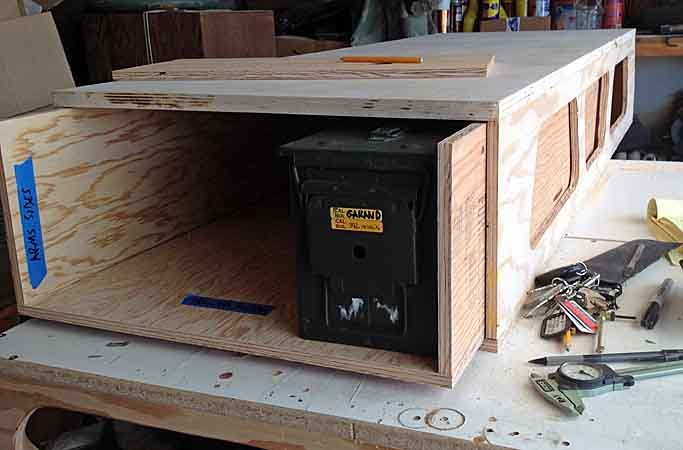edit: not a drawer, more like a drawer housing box, without the drawer.. There's a word for that...
I have some left over 1/2" King starboard (HDPE plastic) that I want to use to make an open front box and the fridge will sit on top. 2 Front Runner cub packs will go inside.
What is the strongest, simplest way to make the box? Without using a router, I think my options are basically
1. sides sit on top of bottom panel
2. sides sit on outside of bottom panel
3. sides sit inside, back panel sits outside?
Maybe add a few inside corner steel reinforcing brackets?
I'll just use flat wood screws from the outside, no pocket holes
It would be nice if they slid out, but I don't want to take the time or money to add a proper slide... can anyone think of a quick solution? Perhaps recessed ball rollers on the bottom and a stop/guide to make sure the tray doesn't tip out?
I have some left over 1/2" King starboard (HDPE plastic) that I want to use to make an open front box and the fridge will sit on top. 2 Front Runner cub packs will go inside.
What is the strongest, simplest way to make the box? Without using a router, I think my options are basically
1. sides sit on top of bottom panel
2. sides sit on outside of bottom panel
3. sides sit inside, back panel sits outside?
Maybe add a few inside corner steel reinforcing brackets?
I'll just use flat wood screws from the outside, no pocket holes
It would be nice if they slid out, but I don't want to take the time or money to add a proper slide... can anyone think of a quick solution? Perhaps recessed ball rollers on the bottom and a stop/guide to make sure the tray doesn't tip out?


